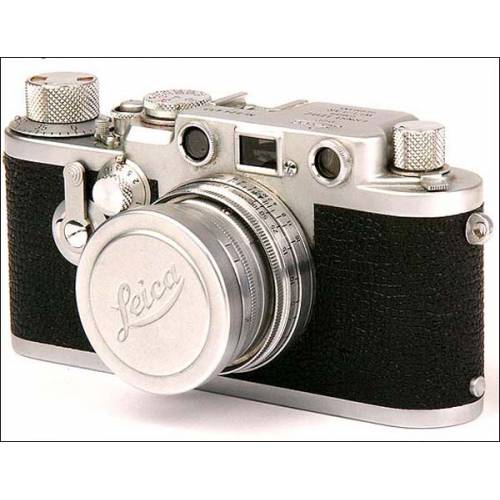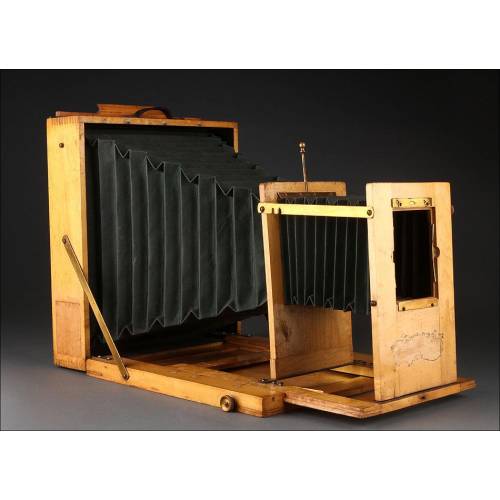B-817
Antique Berville Camera Lucida. Complete. France, Circa 1920
Antique chrome plated metal camera lucida, in its original vintage case. Perfect working order.
Sold!
Fascinating camera lucida made in France in the early 20th century (circa 1920) by the prestigious manufacturer P. Berville. This drawing instrument makes it possible to reproduce images directly from natural thanks to a simple and ingenious lens system so the object, person or landscape to be portrayed will be drawn in the exact proportions. The camera lucida that we can see in these images comes in its original storing case; both remain in wonderful condition. We can see the manufacturers signature as a part of a hand-engraved inscription: CHAMBRE CLAIRE UNIVERSELLE MODÈLE DEPOSÉ P. BERVILLE 18 Rue LaFayette. PARIS. The camera lucida comes dismantled into the storing case. In order to use, the metal pieces must be connected to make up an articulated arm. At the bottom end there is a clamp to attach the arm to the table or drawing base. At the top there is a lens that must be focused to the object to be drawn. The lens will project its silhouette on the paper or canvas so the artist can easily draw its shape. This camera lucida is complete and comes with all its original lenses; on the other hands, the storing case is greatly preserved and bears the manufacturers mark stamped in gold on the bright red lining.Tan atractiva como funcional, esta cámara lúcida antigua hará las delicias de los amantes del dibujo y de los inventos ingeniosos. Medidas (Estuche): Ancho: 10,8 cm. Fondo: 6 cm.History of the Camera Lucida The camera lucida was invented in the 19th century. It is a device to reproduce objects from nature while keeping the exact proportions in the drawing. It was described by Johannes Kepler in his work Dioptrica (1611), but there is no evidence of any of his contemporaries constructing a working camera lucida. The first one was designed and made by William H. Wollaston in 1807; Wollaston also gave it its definite name (camera lucida, meaning light room as a contraposition of camera obscura, dark room). During the 19th and early-20th century, cameras lucidas were quite popular. In 1833, the photographic pioneer William Fox Talbot tried to reproduce objects from nature using a camera lucida, but he was quite disappointed and decided to seek a means to "cause these natural images to imprint themselves durably". Today these devices are still produced, though they are not widely used.


















































